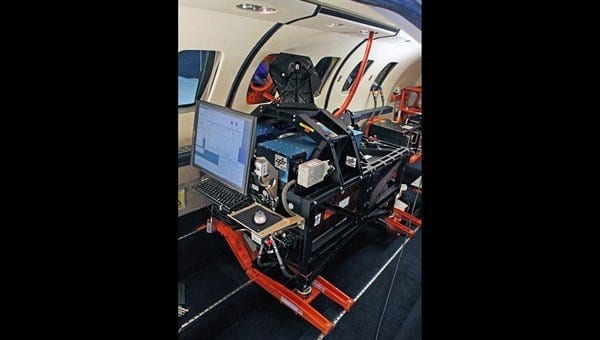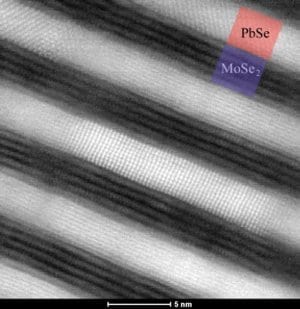
Many aircraft passengers are familiar with the phenomenon; the sky is clear and blue, the aircraft is cruising calmly, but suddenly everything is disrupted by temporary turbulence.
Passengers frequently experience this as a kind of ‘hole in the air’. The reason for this unpleasant change in flight altitude is something known as ‘clear-air turbulence’ (CAT) – turbulence that occurs independently of cloud cover, is invisible and cannot be accurately predicted. For both passengers and crew, strong turbulence can mean an increased risk of falls and accidents. Recent results in atmospheric research indicate that such turbulence will occur more frequently due to climate change and will become even more of a problem for aircraft. However, a method of detecting turbulence has now been developed for the first time, under a European joint project called DELICAT (Demonstration of LIDAR based Clear Air Turbulence detection). The new technology is currently being tested by the German Aerospace Center (Deutsches Zentrum für Luft- und Raumfahrt; DLR) and the project partners. The current measurement flight campaign will take place until the end of August. The flight route starts in Amsterdam and continues throughout Europe.
Origin of turbulence
Wind shear often occurs along the jet stream. This involves extended layers of air that move against each other horizontally at different speeds. Particularly strong wind shear can create waves that ultimately break, like waves on water. When a wave breaks, it either causes vortices in the air, or turbulence – specifically CAT.
When an aircraft encounters this turbulence, it alters the angle of the airflow over the wings; this leads to the familiar changes in lift. CAT has long been an unavoidable phenomenon in aviation, as these swirling air masses in the clear sky are neither visible to the eye nor measurable with sensors.
A solution is on the horizon; in future it might be possible to calculate where air turbulence is, using laser measurements to generate the required data. The idea is to identify, in advance, any minor changes in the density and speed of the air along the flight path and use this to detect and predict CAT from a distance.
Measurement by laser
Researchers at the DLR Institute of Atmospheric Physics have developed a laser-based measurement device to do this. A LIDAR (Light Detection and Ranging) instrument can be installed on board an aircraft and emits short-wave ultraviolet laser radiation along the direction of flight. The density of the air is determined from the backscatter value measured for the air molecules, oxygen and nitrogen. Fluctuations in this density then provide information about the turbulence there. This indirectly acquired information enables analysis of the air in the region the aircraft is about to fly through. In other words, clear air turbulence is made visible in advance along the route.
The Latest Bing News on:
Detecting turbulence
- Malware Analysis Market CAGR of 31%, Ethnography Techniques Revealing the Unconscious Factors Shaping Consumer Behavioron April 25, 2024 at 4:20 pm
Global Malware Analysis Market is valued at approximately USD 3 billion in 2019 and is anticipated to grow with a healthy growth rate of more than 31% over the forecast period 2020-2027. Malware ...
- Deadly Microburst: The Tragic Story Of Delta Air Lines Flight 191on April 24, 2024 at 12:00 pm
One such eye-opening tragedy was the 1985 crash of Delta Air Lines Flight 191. While attempting to land during a thunderstorm at Dallas/Fort Worth International Airport (DFW), the aircraft encountered ...
- New Qualcomm-Built Advanced Video Processor By Teledyne FLIR Powers AI At The Edgeon April 23, 2024 at 8:19 pm
New AVP with industry-leading size, weight, and power (SWaP) runs Teledyne FLIR's Prism AI and ISP software libraries enabling drone, robot, and sec ...
- Astrophysicists work toward unification of turbulence framework—weak-to-strong transition discovered in turbulenceon April 23, 2024 at 9:59 am
Turbulence is ubiquitous in nature. It exists everywhere, from our daily lives to the distant universe, while being labeled as "the last great unsolved problem of classical physics" by Richard Feynman ...
- 800 charges filed after raids on several businesses in North Carolina, deputies sayon April 22, 2024 at 6:08 am
A multi-agency operation resulted in several North Carolina businesses being raided and more than 800 charges being filed, authorities say.
- SEC’s CAT Imposes ‘Dystopian’ Surveillance on Investors: Lawsuiton April 18, 2024 at 5:33 am
The new suit, filed on Tuesday in federal court in Waco, Texas, and led by conservative think tank National Center for Public Policy Research, alleges that the agency didn't have the authority to ...
- Boeing hits turbulence as whistleblowers address senate hearingon April 17, 2024 at 11:40 pm
Aircraft manufacturing giant Boeing has hit fresh turbulence with politicians in Washington DC now scrutinising the allegations of major safety failures. Added 15 minutes ago ...
- CPI Ruins the Party: 3 High-Flying Stocks to Cash Out Ofon April 16, 2024 at 2:45 pm
InvestorPlace - Stock Market News, Stock Advice & Trading Tips United States equities have calmed down since their rally in the first quarter ...
- Barnbrook secures major new aerospace orderon April 15, 2024 at 9:27 am
Global engineering solutions specialist, Barnbrook Systems, has won a six-figure order for its cutting-edge helicopter refuelling enablement system.
- Research During Solar Eclipse Could Shed Light on Shadow Bandson April 15, 2024 at 9:02 am
Bach, Peterson, Turnshek and the Pitt Shadow Bandits worked for months building instruments and setting up the experiment. During the Oct. 14, 2023, annular eclipse — where the moon did not completely ...
The Latest Google Headlines on:
Detecting turbulence
[google_news title=”” keyword=”Detecting turbulence” num_posts=”10″ blurb_length=”0″ show_thumb=”left”]
The Latest Bing News on:
Clear-air turbulence
- 2025 NFL mock draft: QB Shedeur Sanders lands in late first, Travis Hunter in top threeon April 28, 2024 at 6:14 am
NFL mock draft is a fitting follow-up to this year's event, which was rooted in uncertainty. Where could the stars of next season land?
- Air Travel Pro Explains Confusing Difference Between Business and Economy Seat Featureson April 27, 2024 at 6:00 am
The Arena Media Brands, LLC and respective content providers to this website may receive compensation for some links to products and services on this website.
- How Meta’s $200 Billion Stock Plunge Could Impact Workerson April 25, 2024 at 12:42 pm
A lower stock price indicates investors are less confident in Meta's future earnings potential. Historically, job cuts have been the go-to, quick fix to appease investors.
- Flying Through the Center of a Trough Should Have Been Uneventfulon April 25, 2024 at 6:52 am
It wasn’t the storm of the century or even in the top 10,000, but it was a significant event from a four-seat piston pilot’s perspective.
- 6 Best Airline Stocks to Buy This Yearon April 24, 2024 at 11:01 am
Airline travel numbers are above pre-pandemic levels and likely to increase in summer, making these six airline stocks a good momentum investment.
- ForeFlight Crowdsources AHRS-based Turbulence Reportson April 22, 2024 at 9:00 am
The reports, generated from the Sentry data, show varying levels of intensity from smooth to severe at altitudes flown by aircraft carrying the Sentry devices.
- Man's leg 'snapped in half' 30 minutes into flight after plane hit by severe turbulenceon April 20, 2024 at 3:21 am
Niko, 47, who lives in Bali, was left with a broken leg at the start of his journey to New Zealand after the plane was hit with 'clear air turbulence' while he was heading back to his seat ...
- Pilot explains what happens during turbulence and why passengers shouldn’t be afraidon April 19, 2024 at 5:35 am
Many TikTokers were grateful for the airline’s PSA, with one commenting: “I wish more pilots would get on the speaker system and say this turbulence is only going to last for about a few minutes, or ...
- An Air New Zealand passenger was left with a broken leg in the air for over 6 hours after severe turbulenceon April 19, 2024 at 4:28 am
A 47-year-old Air New Zealand passenger was visiting the bathroom 30 minutes into a seven-hour flight when severe turbulence lead to a bad leg break.
- 'Snapped in half': Passenger breaks leg on seven-hour Air NZ flighton April 18, 2024 at 11:17 pm
An Air New Zealand passenger suffered a badly broken leg just 30 minutes into a seven-hour international flight after the plane hit turbulence when he was ...
The Latest Google Headlines on:
Clear-air turbulence
[google_news title=”” keyword=”Clear-air turbulence” num_posts=”10″ blurb_length=”0″ show_thumb=”left”]









